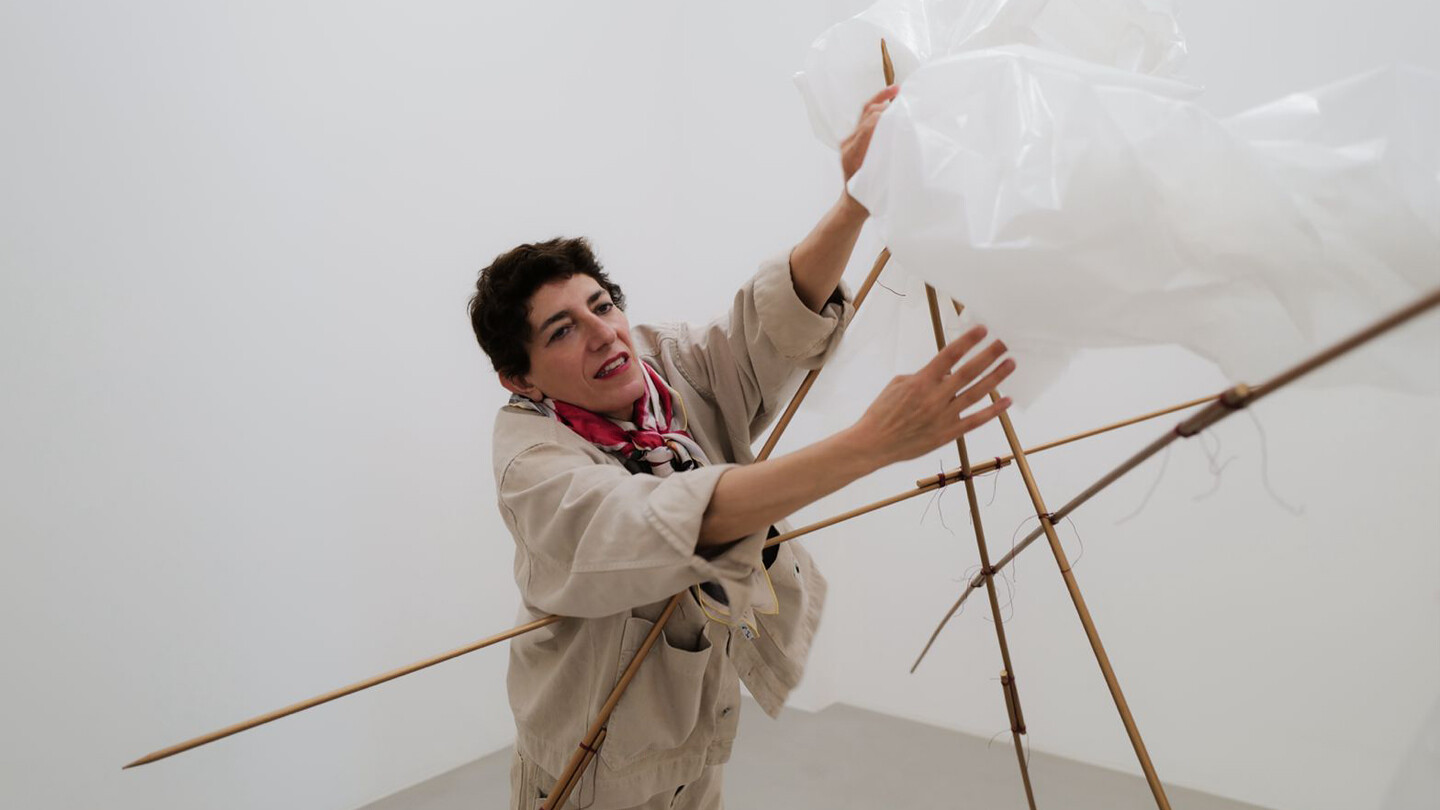Pratza ’e Domo. A Semiotic House That Was Never Built
June 29–November 3, 2024
Via Gonare no. 2
08026 Orani NU
Italy
Hours: Thursday–Tuesday 10:30am–7:30pm
T +39 0784 730063
F +39 0784 730062
info@museonivola.it
The exhibition—a project created by Nairy Baghramian for the museum following the awarding of the 2023 Nivola Award for sculpture—features works by Nairy Baghramian, Phyllida Barlow, Nicolas Hsiung, Janette Laverrière Rosemary Mayer, Win McCarthy, Julie Mehretu, Oscar Murillo, Paulina Olowska, Monika Sosnowska, Mariantonia Urru.
Baghramian’s title Pratza ’e Domo (“home square”) takes up the expression that in Sardinia designates the space in front of a house: a transition area not clearly delimited, at the same time private and public. This space, both physical and conceptual, is linked to the idea of A Semiotic House That Was Never Built, a project created by Baghramian in 2008 at the NAK together with Janette Laverrière and Henrik Olesen.
The artist conceives the house as a utopian space that has never been built and may not be, but the mere fact of imagining it evokes the possibility of its existence. It is a provisional environment to develop or set aside ideas and projects in continuous elaboration and re-assembly of fragments. Each fragment is an independent creation and contributes to the definition of a context.
Pratza ’e Domo combines several aspects of Baghramian’s practice. One is the interest in the boundaries between public and private space, external and internal, explored as potentially permeable and, therefore, full of tension. If, in her previous works, the tension is generally delineated between the institutional space of the museum and the social space, in this case, the institutional space is identified with the domestic one. From the house, the museum space takes on qualities of welcome and protection, becoming an enclosure in which different artistic discourses can coexist. The merging of public and private spaces characterises both Baghramian’s new sculpture, To Let, mounted on the facade of the building and in dialogue with those by Phyllida Barlow, and the depiction of the work January ’17 calendar (2017) by Win McCarthy—which appears on the exhibition poster—where local and temporal axes converge in a hybrid between a floor plan and a calendar.
Another border area is that between art and design, investigated in the exhibition through deliberately hybrid works such as the chair-sculpture Chaise L’Afghane (1987) by Janette Laverrière, the stools by Nicolas Hsiung, the painted fatigue dress Arepas y Tamales (2022) by Oscar Murillo or, by Baghramian herself, the monumental carpet woven in Samugheo by Mariantonia Urru, and the handle-sculpture applied to a door in the museum courtyard.
The unfinished is also a recurring theme: Baghramian’s sculptures, often apparently fragile or incomplete, hint at a discomfort that forces them to stand on crutches or lean on architecture, as in the Scratching the Back series. Precarity, incompleteness, and ephemerality return in the house under construction on a tree painted by Paulina Olowska (Tree House, 2016), in the aerial structures by Rosemary Mayer (Midwinter Ghost, 1980-81 / 2024), in the raw and provisional-looking works by Phyllida Barlow (Untitled, 2010), in Monika Sosnowska’s fragments of fences (Gate, 2019) as well as in the swirling rhythms of Julie Mehretu’s abstract compositions.
Not new to collaborative ideas, Baghramian developed early on the practice to shift invitations to solo projects into collective experiences with artists such as Janette Laverrière, Jan Timme, Maria Hassabi, and recently Julie Mehretu, with whom she has had a dialogue culminating in the sculptural frames Baghramian conceived for Mehretu’s Transpaintings, part of the Mehretu Ensemble exhibition (Palazzo Grassi, 2024). As in the exhibitions Off Broadway (The Wattis Institute, San Francisco) and Open Dress (Museum Abteiberg, Germany), again at the Nivola Museum, collaboration comes to the fore in her work, with projects that bring together a group of artists linked to Baghramian by various affinities, reflecting on the potential of collaborative work.
Finally, the exhibition concept echoes the exile condition of Costantino Nivola, who fled fascist Italy in 1938 to settle in New York, returning occasionally to Europe and Sardinia only after the end of the war.



